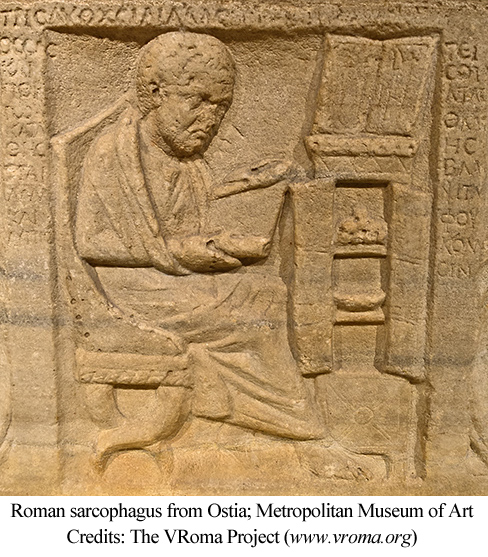By Helen King

Galen was, to put it politely, a bit of a show-off. Since our main source for Galen is Galen himself, this can make it difficult to work out whether he was as great a physician as he makes out. I think the answer has to be that he was; his second-century AD career, started among the injured gladiators at his home town of Pergamum, peaked with him becoming one of the physicians to the emperor Marcus Aurelius and his family, so he certainly impressed the right people when he lived in the great metropolis of Rome.
But his prolific writings were also about constructing the right image, in an ancient example of ‘reputation management’. For example, he misses no opportunity to tell us just what care he took in understanding the works of his predecessors. Like any good researcher, he went back to the original sources, often comparing several versions of a text to work out what it probably said before it was copied by generations of scribes. This meant that he visited libraries to find old books. Ancient libraries have recently been the focus of a lot of scholarly research, and references to them lurk in the work of many Greek and Roman writers. The ancient Greek word was bibliothêka. Galen’s work contributes to this research. Among the many things we learn from incidental comments he makes about libraries is that people in antiquity could deface books, sometimes with dangerous consequences. For example, in his treatise On Antidotes (1.5) Galen tells us that the common system of using a Greek lettert to represent a number meant that it was far too easy to change a ‘five’ into a ‘nine’ (in Greek, an ‘e’ into a ‘th’). If the text was giving the ingredients for a drug recipe, the results could be very nasty indeed.
This even happened, Galen claims, in the Great Library of Alexandria, which allegedly had the interesting book acquisition policy of inspecting any books brought into the port, having them copied, and then returning the copy to the owner while putting the original into the library. In the treatise in which Galen talks about this – a commentary on the Hippocratic collection Epidemics Book 3 – Galen adds that these originals were then left in ‘heaps’ before being taken into the library itself. Anyone who uses libraries for research today will be familiar with that sinking feeling when the catalogue says ‘being processed’ or ‘being catalogued’; it seems this is not a new phenomenon. Galen is suggesting that even the Alexandrian library was not as well-organised as he himself was!
For Epidemics, Galen tells us that at Alexandria a man called Mnemon added in symbols to the text of the Hippocratic writer, using the same colour of ink and copying the handwriting (in forging, it’s important to remember the ink colour issue). Mnemon then claimed that these symbols were the secret key to understanding the text – and that only he knew what they meant! That has to be nearly as good a job of self-promotion as that done by Galen himself… So, Galen suggests, even books found in the Alexandrian library were not always to be trusted. Perhaps his underlying point is that the only source of reliable information is – Galen.
(PS and when I say ‘books’, think papyrus rolls, in most cases, as seen being unrolled in the image from a physician’s sarcophagus from Roman Ostia, kindly supplied for me by Barbara McManus)
Some reading on ancient libraries:
William A. Johnson and Holt N. Parker (eds), Ancient Literacies: The Culture of Reading in Greece and Rome. Oxford: Oxford University Press, 2009.
Jason König, Katerina Oikonomopolou and Greg Woolf, (eds.) Ancient Libraries. Cambridge: Cambridge University Press, 2013.
